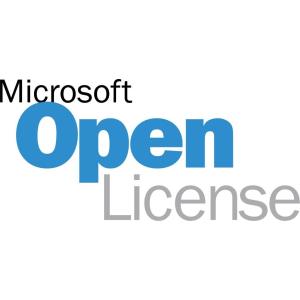-
ScreenMemoryWeightProcessorHard DiskSSDScreenResolutionConnectivityMemoryCaseOSScreenTypeSpeed BlackSpeed ColourModelProcessor SpeedForm FactorInternal / ExternalPort CountUplink / mediaMounting
- View All Specs
Bundles
Related products
Product Information
Windows Server 2008
Windows Server 2008 R2 builds on the award-winning foundation of Windows Server 2008, expanding existing technology and adding new features to enable IT professionals to increase the reliability and flexibility of their server infrastructures. New virtualization tools, Web resources, management enhancements, and exciting Windows 7 integration help save time, reduce costs, and provide a platform for a dynamic and efficiently managed data center. Powerful tools such as Internet Information Services (IIS) version 7.5, updated Server Manager and Hyper-V platforms and Windows PowerShell version 2.0 combine to give customers greater control, increased efficiency and the ability to react to front-line business needs faster than ever before.
Enabling Server and Desktop Virtualization
Virtualization is a major part of today’s data centers. The operating efficiencies offered by virtualization allow organizations to dramatically reduce operational effort and power consumption. Windows Server 2008 R2 provides the following virtualization types: Client and Server virtualization provided by Hyper-V and Presentation virtualization with Remote Desktop Services.
Hyper-V
Windows Server 2008 R2 introduces a new version of Hyper-V. Hyper-V in Windows Server 2008 R2 includes a number of core areas of improvement for creating dynamic virtual data centers including increased availability and performance, improved management, simplified methods for deployment and new features including live migration.
Remote Desktop Services (formerly known as Terminal Services)
Remote Desktop Services provides users and administrators with both the features and the flexibility necessary to build the most robust access experience in any deployment scenario. To expand the Remote Desktop Services feature set, Microsoft has been investing in the Virtual Desktop Infrastructure, also known as VDI. VDI is a centralized desktop delivery architecture, which enables Windows and other desktop environments to run and be managed in virtual machines on a centralized server.
Improving Power Management and Streamlining Management
The ongoing management of servers in the data center is one of the most time-consuming tasks facing IT professionals today. Any management strategy you deploy must support the management of both your physical and virtual environments. To help with this problem, Windows Server 2008 R2 has new features to reduce the ongoing management of Windows Server 2008 R2 and to reduce the administrative effort for common day-to-day operational tasks. These include:
- Improved data center power consumption management;
- Improved Management of File Services;
- Improved remote administration;
- Reduced administrative effort for administrative tasks performed interactively;
- Enhanced command-line and automated management by using PowerShell version 2.0;
- Improved identity management;
- Improved compliance with established standards and best practices.
Scalability and Reliability
Windows Server 2008 R2 is capable of unprecedented workload size, dynamic scalability, and across-the-board availability and reliability. A host of new and updated features will be available, including leveraging sophisticated CPU architectures, increased operating system componentization, and improved performance and scalability for applications and services.
- Leveraging sophisticated CPU architectures;
- Increased operating system componentization;
- Improved performance and scalability for applications and services;
- Improved Storage Solutions;
- Improved Protection of Intranet Resources;
- Learn more about Scalability and Reliability in Windows Sever 2008 R2.
Making the Experience Better Together with Windows 7
Windows Server 2008 R2 has many features that are designed specifically to work with client computers running Windows 7. Windows 7 is the next version of the Windows client operating system from Microsoft. Features that are only available when running Windows 7 client computers with server computers running Windows Server 2008 R2 include:
- Simplified remote connectivity for corporate computers by using the DirectAccess feature
- Secured remote connectivity for private and public computers;
- Improved performance for branch offices;
- Improved security for branch offices;
- Improved virtualized desktop integration;
- Higher fault tolerance for connectivity between sites.
| License | |
| Type | Database |
| License type | Government (GOV) |
| License quantity | 1 license(s) |
| System requirements | |
| Minimum storage drive space | 32000 MB |
| Platform | PC |
| Minimum RAM | 512 MB |
| Minimum processor | 1.4 GHz |
| Mac compatibility | N |
| Minimum system requirements | DVD-ROM |
| Warranty | |
| Base Warranty | Non Non |













